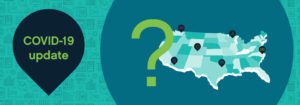This is the second of the two-part series from earlier this month’s “data dumpster” piece. This post will examine the data needs of key stakeholders within a provider organization, including executive leadership, research and industry experts, analysts, front-line staff and operational decision makers.
Understanding Data Consumers and How They Use It
To ensure that provider organizations are getting the most value out of their data, it is important that each individual data consumer understands their needs. Here’s a breakdown of several major roles within an organization that touch data:
- Executive leadership monitors the fundamentals of the organization and focuses on performance and improvement areas. Leadership must be able to quickly determine if and where action is required. At the same time, leadership dashboards and reports are an important tool to align the disparate players in an organization to the leadership’s strategic vision. An executive level dashboard is as much a message from the execs to their managers as it is a report on the managers to the execs. Metrics and data used at this level need to be clearly defined and understood by dashboard and report users. Complicated “composite” scores which try to give a weighted score let poor performers divert attention by arguing over appropriate weighting. On the flip side, adding every conceivable relevant metric can obscure and “steal” attention and focus away from the key strategic priorities of the enterprise. It is best to keep it simple and encourage leaders to use the rest of analytics to drill into detail.
- Researchers and industry experts focus on solving problems and thus valuable insights are best found by asking questions around the identified problems. Data should thus be gathered with the question in mind. “What is the expected value of this claim?” “What are the appropriate clinical and demographic factors to stratify risk in this population?” To aid decision makers, it is important to know what levers can be pulled and what decisions they have to make – analytics can then help determine which decisions should be made. In contrast, data mining – whether it be through free-form data exploration or large data sets – will often yield false positives or insights which are not at best actionable and could result in distracting rabbit holes. If health care providers can’t refuse service, predicting which patients will be most expensive is not very helpful. Providers can, however, change the way they care for patients. Standardizing care around agreed upon best practices has yielded great gains in efficient care. Understanding standardization as a “lever,” the question “which patient groups have the highest variation in cost and outcomes” (and thus the most opportunity for improvement) can prove far more fruitful.
- An analyst’s time is best spent standing on the shoulders of researchers and industry experts, exploring known problem areas and determining the extent to which their organization is affected. Analytics products like MedeAnalytics distill industry insights and best practices to help analysts and decision makers determine which problems are relevant and where to focus. In the example above, an analyst can quickly identify an “opportunity,” and then do further investigation on the filtered data set to identify the realistic best performers and work with leadership to define appropriate standard practices.
- Front line staff/operational decision makers need data that is based on the decision they were asked to make. A billing specialist needs to know the probability that they will be able to collect on the claim and a physician needs to be alerted of potential medication conflicts and reminded of relevant standard care practices for certain situations. More is not better. It can be tempting for a data company to show as much data as possible, showing off the depth of their offering and justifying the large data acquisition costs. A full patient history might be impressive but could bury a key gap in care or potential medication conflict in hundreds of other less important “alerts” or reminders. Those who truly understand the workflow and decisions made will try instead to bring the information thought to be most important to the forefront and then hide the rest behind a couple of clicks in a tool. The “Holy Grail” of generating actionable insights from data analytics is to be able to show the minimum amount of information required to make the right decision.
In all of these areas, it is important to remember not to let “perfect be the enemy of good,” i.e. there needs to be the right balance between understanding the decisions that need to be made, the levers that the data consumer has available to pull and the ultimate objectives of the organization.
Rapidly evolving business models, the availability of information and even shifts in the types of decisions being made will make achieving this balance a constantly changing target. However, it is critical that data consumers remain focused, understand where data can be useful for them and refrain creating “data dumpsters” (whether intentional or unintentional) that will ultimately hamper progress and negatively impact operational costs.
Get our take on industry trends
Avoid COVID-19 modeling pitfalls by eliminating bias, using good data
COVID-19 models are being used every day to predict the course and short- and long-term impacts of the pandemic. And we’ll be using these COVID-19 models for months to come.
Read on...Population Health Amid the Coronavirus Outbreak
In speaking with many colleagues throughout the provider and payer healthcare community, I’ve found an overwhelming sense of helplessness to the outbreak’s onslaught. This is exacerbated by the constant evolution of reported underlying medical conditions that indicate a higher risk of hospitalization or mortality for a coronavirus patient.
Read on...COVID-19 and the Financial Storm Ahead for Providers
Across the country, healthcare organizations are seeing 40%-80% declines in monthly charges with some of the most profitable services lines only seeing 20% of their normal monthly volumes during the pandemic.
Read on...3 Steps Any Healthcare Organization Can Take to Improve Enterprise Analytics
By Kristin Weir When it comes down to the most basic purpose of why organizations use analytics, it’s simple: they…
Read on...


